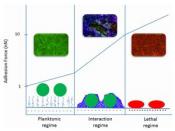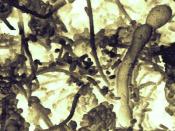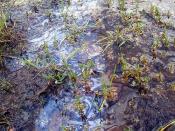Antony Van Leeuwenhoek, the first microbiologist, initially saw bacteria in dental plaque, making him the first oral microbiologist and biofilm experimenter back in the 1600s. Biofilms form when bacteria adhere to surfaces and begin to excrete a slimy, glue-like substance that can anchor them to all kinds of material - such as metals, plastics, soil particles, medical implant materials, and tissue. A biofilm can be formed by a single bacterial species, but more often biofilms consist of many species of bacteria, as well as fungi, algae, protozoa, debris and corrosion products. Essentially, biofilms may form on any surface exposed to bacteria and some amount of water.
Bacteria have a few key ways to attach to a surface. Pili, short structural appendages connected to the cell wall, can help attach bacteria to a variety of surfaces. Another attachment method is the glycocalyx, a protein-polysaccharide coating that was also called the slime layer.
The glycocalyx is a loose mass of carbohydrate-based material secreted by bacteria. This material is critical to the attachment of bacteria to surfaces and has a variety of other functions as well. Once a biofilm forms, a number of things begin to happen. "Bacteria start chemically signaling each other by a process known as quorum sensing". The bacteria then send other signals to each other, which, in turn, start a process known as signaling. "Signaling induces bacteria to start behaving not as planktonic free single cells, but rather like multicellular systems acting in concert."
Once anchored to a surface, biofilm microorganisms carry out a variety of reactions both good and bad, depending on the surrounding environmental conditions. Biofilms are responsible for diseases such as otitis media, the most common acute ear infection in children in the U.S. "Other diseases in which biofilms play a role include bacterial endocarditis...


